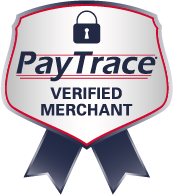
Internet Marketing, your website needs to STAND OUT in all the right ways!
Website Design Trends for 2015
Another in our series of Internet Marketing blog installments ~ In the world of business-to-business and the internet, the only thing constant is change. As new technologies and trends occur, your brand has to be ready to adapt all of its channels accordingly. As you evaluate your website and prepare for a new year, consider these trends predicted for web design in 2015.
1. Websites as a complement to other channels.
In the past, a brand’s website was its primary point of contact with prospects and clients. All other platforms existed to support the website, which remained your businesses’ main source of interaction and information. The focus on the website has been diminishing gradually over the past few years, and you can expect this trend to continue in 2015. It’s time to start looking at your website as a single (but still important) part of your larger marketing strategy.
2. Emphasis on responsive design.
Every day, more and more consumers are using their mobile devices (smart phones, tablets, etc.) to view websites. With so many businesses relying on these devices, brands can no longer afford to ignore this trend. If your website takes too long to load or is difficult to navigate on a mobile device, consumers will simply leave the site and find one of your competitors. For this reason, responsive website design, which allows your website to automatically adapt to the size of the user’s screen, is a must for 2015.
3. Intriguing background images/videos.
During 2015, you can also expect to see a greater number of websites enhanced with elegant or interesting background images and videos. If you choose to take part in this trend, remember that practicality is still important. Make sure that the image or video you use for your site’s background does not slow down the site’s loading or take away from the content of the page.
4. Use of pictures instead of words.
Text will always be important for your brand’s website. However, in 2015, you can expect a shift away from plain text in favor of meaningful pictures. One of the best examples of this trend is the recent influx of infographics, which combine text and images in order to convey important or interesting information to users.
5. Scrolling.
In the past, users navigated to various pages on a website by clicking a link. Each page was designed to fit on the users’ screen or require only a limited amount of scrolling. Recently, more websites have been allowing users to reach the majority of their content by simply scrolling down a single page. This trend, which cuts down on load times and enhances experiences for mobile users, is expected to continue next year.
6. Personalized user experiences.
Prominent brands, like Amazon and Netflix, have been offering customized user interfaces for a while now, but the trend is becoming more pervasive. These interfaces allow consumers to interact with your brand on a deeper level by accessing the content that is most likely to be interesting or useful to them. Incorporating this strategy into your website design not only shows visitors that you are paying attention, but it may also boost sales.
The bottom line is that in order for your brand and company to remain fresh and compelling to prospects and customers, you’ll need to keep up-to-date with not only content but also with the design and use-ability of your site. Remember, you are competing with internet marketing savvy companies who know how to fully utilize their websites, so you’ll want to shore up your supporting cast of website assets with these great tips.









